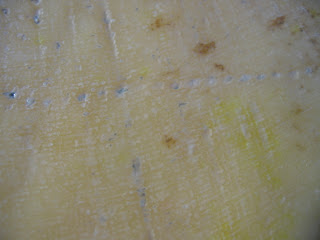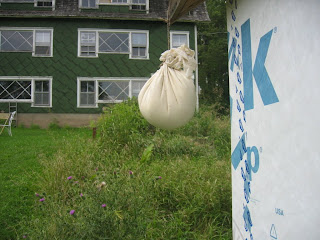
Here my first attempt of making some Gouda. I fetched 10 gallons of cows milk at the nearby farm and used it raw. I had just purchased bigger pot (40 qts) so I could manage this volume.
My mother was visiting from Holland and memories from here youth came floating up. Her mother used to make cheese for in the 1930's to be sold by her husband who sold milk and related products, delivering these with a pony cart.
I assume the cheese she made must have been a Gouda style. The milk she used must have been straight from the cows because, according to my mother, it was not warmed up. The milk was poured in a large wooden vat and besides being from wood, it would have been too large to be put on the kerosene heaters they used to cook on. My mother did not remember what kind of starter she used, but I imaging she made her own.

cutting the curd horizontally

cutting the curd vertically

initial cut curds

cooking the curd and stirring it

draining of one third of the whey

I have replenished the whey with warm water to wash the curd

the curd

some more cooking and stirring

drained curd and whey

and again, drained curd and whey

the curd in the cheesecloth in the form

and pressing. Notice the whey running from the draining spout.

The curd cutting tools. These are all home made, a long stainless steel blade for the horizontal cutting, a stainless steel 90 degree bend blade for the vertical cutting and a large stainless steel wisk.

pressing with some weight

and some more weight added

the cheese between turnings

the cheeses after pressing



the cheese in the brine

aging

with some Tommes































































